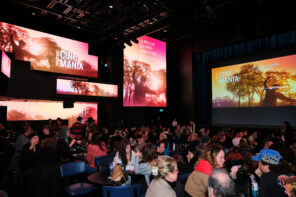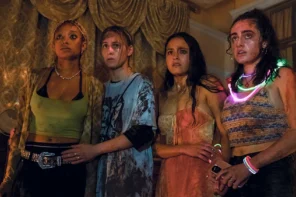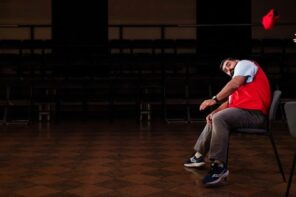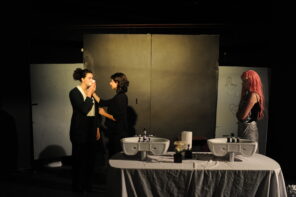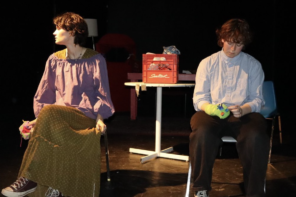Peter Pan ends the Players’ Theater season with an explosive fairy tale riddled with provoking adult content. This adaptation of Peter Pan, directed and compiled by Players’ Theater veteran Kelly Richmond, creatively combined J.M. Barrie’s novel and script of the same subject.
The play immediately captures your attention when a velvet-clad narrator introduces the household of Wendy, John, and Michael Darling. This omniscient character frequently interjects throughout the play to give the audience information about off-stage action and insight into the minds of the characters. These witty interruptions rupture the flow of the action to create another level of consciousness in the narration. This technique successfully invited the audience to become emotionally invested in the performance.
In addition to this unique form of narration, the interplay between music and silence create compelling tension during heated dialogue and add a fiery background to the many fight scenes throughout the play. Tinkerbelle specifically is characterized by the classic jingle of bells, enabling the audience to imagine her flitting movement across the stage.
Peter Pan surprises the audience more than once during the production but the revelation of Neverland is most memorable moment as the stage transforms into a fairyland of twinkling lights. This transformation sets the scene for the different groups of eclectic characters that Wendy, John, and Michael are destined to encounter while in Neverland. The host of Indians, Pirates, Mermaids, and Lost Boys are each characterized by clever costume choices that reflect the countenance of each group. I especially noted the use of color eye contacts on certain characters. Peter Pan sports electric green color eye contacts while Captain Hook wears fiery red ones. These not only draw your attention to their playful facial expressions but also to their characterization as either good or evil.
This play was an outstanding interpretation because it moved beyond the classic Disney portrayal of the story to include more adult themes. In an interview with Richmond, she explained how the darker aspects of Barrie’s novel inspired her script: ‘I was primarily preoccupied with the book. I read it in high school and I was like, “this is really dark and weird!” When I was looking for a play to direct for Players’ I really felt like Peter Pan and the themes of growing up connected.’ Part of the play’s success can be attributed to how Richmond compiled what the stage directions of the play and what she actually inserted into the content of the dialogue itself. She mentioned that the dialogue in the play is child-like but the stage directions were very dark and adult suggesting that “[the children] knew what they were saying about mortality and sexuality.” Richmond said that these themes–sex and death–really appealed to her. “[Peter Pan] is asking the audience and the characters to make a decision as to what growing up means.” She adds that this is “coming from the perspective that this is bad and corrupt, something that is force upon the individual by society rather than something that they choose to do of their own accord.”


